Many gardeners wonder: does eggplant need a trellis? The short answer is: it depends on your growing method, plant variety, and garden conditions. Let’s explore why support can be beneficial, when it’s optional, and the best ways to keep your eggplants healthy and productive.
Eggplants are beautiful, productive plants that can produce delicious fruits throughout the growing season.
Why Support Can Help Eggplant
Eggplants naturally grow upright, but their stems can be weak, especially as the fruits develop. Heavy fruits can weigh down branches, causing them to bend, break, or even topple over. Supporting your eggplants can:
- Prevent stem breakage. Keeping your plant healthy and productive.
- Provide good air circulation. Reducing the risk of fungal diseases like blight or powdery mildew.
- Make harvesting easier. Fruits are easier to see and pick when plants are upright.
- Save garden space. Vertical growth can be a space-saving strategy in smaller gardens.
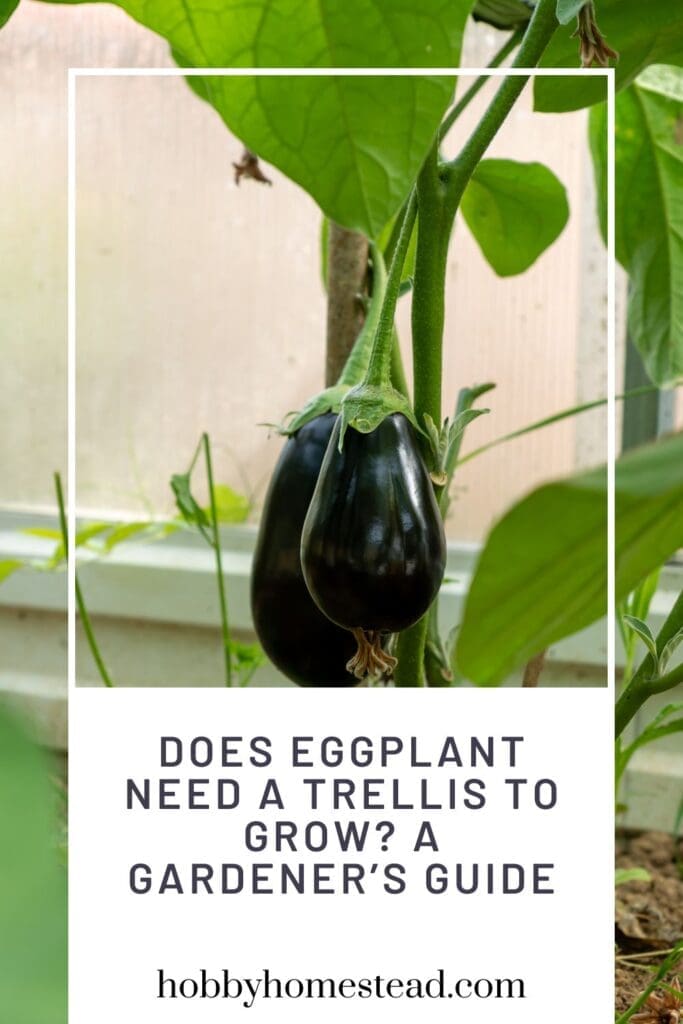
Do All Eggplants Need a Trellis?
Not necessarily. The need for support depends on several factors:
- Eggplant Varieties
- Miniature or small-fruited varieties often don’t need a trellis.
- Large-fruited varieties like ‘Black Beauty’ or Asian eggplants benefit from support.
- Growing Conditions
- Plants in windy or rainy areas may need extra support.
- In small container gardens, stakes or cages can prevent tipping.
- Plant Health
- Strong, bushy plants may hold their own.
- Plants that are leggy or weak-stemmed benefit from a trellis or cage.
Trellising Methods for Eggplants
If you decide your eggplants could use support, here are some effective options.
Signs Your Eggplant Needs Support
- Branches bending under the weight of fruit.
- Plants leaning or tipping over in wind or rain.
- Fruits lying on the soil, which increases risk of rot.
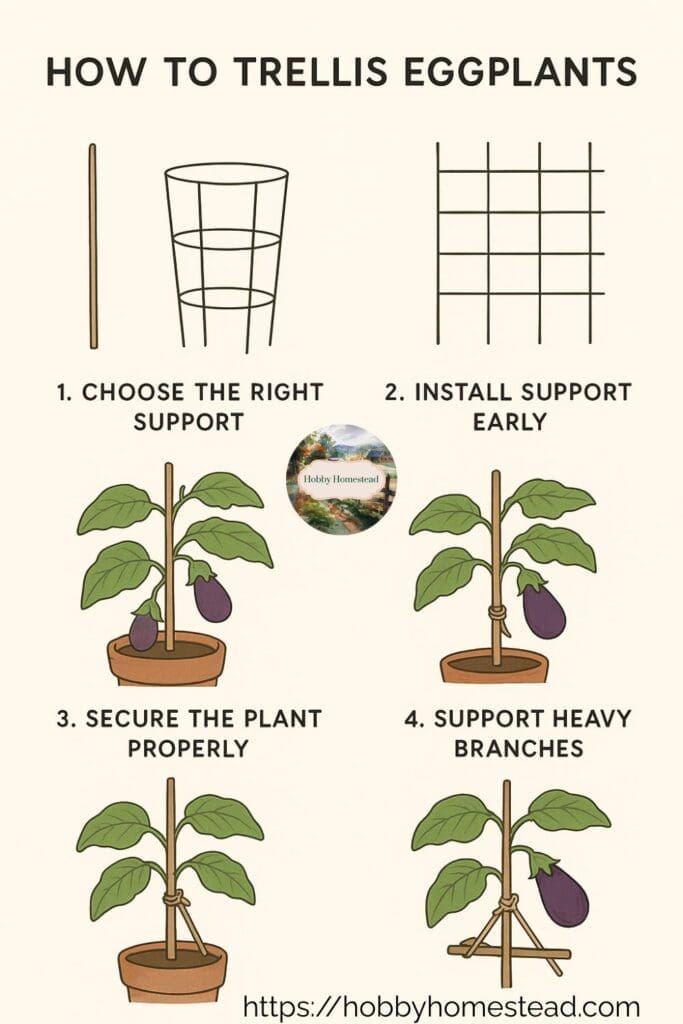
How to Trellis Eggplants: Step-by-Step Guide
Providing proper support to eggplants can make a huge difference in plant health and fruit production. Here’s how to trellis them effectively.
Install Support Early
- Place stakes or cages at planting time, not after the plant is fully grown.
- For containers, make sure the stake or cage is securely anchored in the soil or potting mix to prevent tipping.
Stakes
Drive a sturdy stake into the soil next to the plant and loosely tie the main stem, base of the plant, with garden twine. Re-tie as the plant grows.
Use a sturdy wooden, bamboo, or metal stake at least 4–6 feet tall for large varieties. Small varieties only need a 3–4 foot stake.
Tomato cages
Cages are designed for tomatoes but work well for eggplants, keeping branches upright and supporting fruit weight. Choose cages with wide openings to accommodate thick stems and multiple branches.
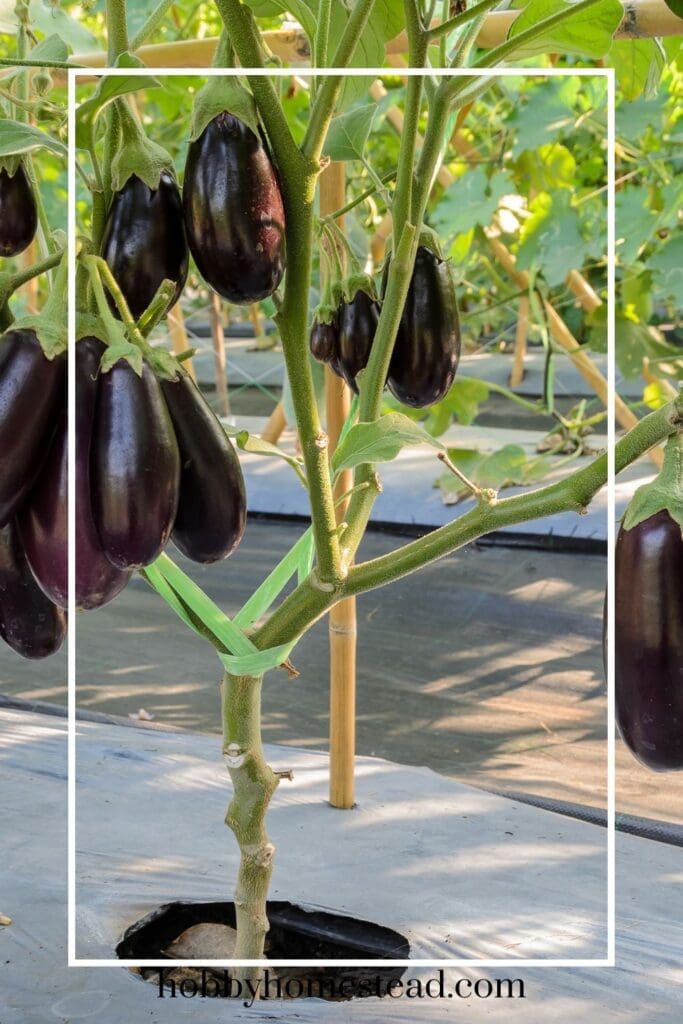
Trellis System or Vertical Support
Simple garden trellises or string supports can help plants grow vertically. This is especially useful in small spaces or for container-grown eggplants.
For vertical gardens or space-saving setups, a trellis or even strong garden string tied to overhead support can guide eggplants upward.
Secure the Plant Properly
- Use soft plant ties, garden twine, or strips of cloth to gently tie the main stem to the support.
- Tie loosely to avoid cutting into the stem as it grows.
- Add additional ties as the plant grows taller and branches develop.
Support Heavy Branches
- As fruits grow, some branches may droop under the weight.
- Use small stakes or additional ties to lift these branches, preventing breakage.
- Alternatively, a wide tomato cage will naturally hold up multiple branches without tying each individually.
Adjust Regularly
- Check your eggplants weekly.
- Adjust ties or supports as needed, especially after wind, rain, or rapid growth.
Container-Grown Eggplants and Support
Eggplants grown in containers almost always benefit from some support. Heavy fruits can easily tip the pot or snap stems.
Using stakes or a small cage inside the container can prevent damage and keep your plants productive.
Tips for Container-Grown Eggplants
- Containers are for areas with limited space. But they are more prone to tipping, so double stakes or small cages may be necessary.
- Ensure the container is heavy and stable to support tall plants.
- Consider tying the container to a fixed object if you’re using a trellis in a windy area.
Organic Gardening Tips for Eggplant Support
Mulch around the base to keep fertile soil moist and prevent stress on the plant.
Use biodegradable twine or soft plant ties to avoid cutting into stems.
Companion planting with basil, marigolds, or bush beans can help reduce pests and encourage strong and growth.
Indirectly helping the plant handle its own weight.
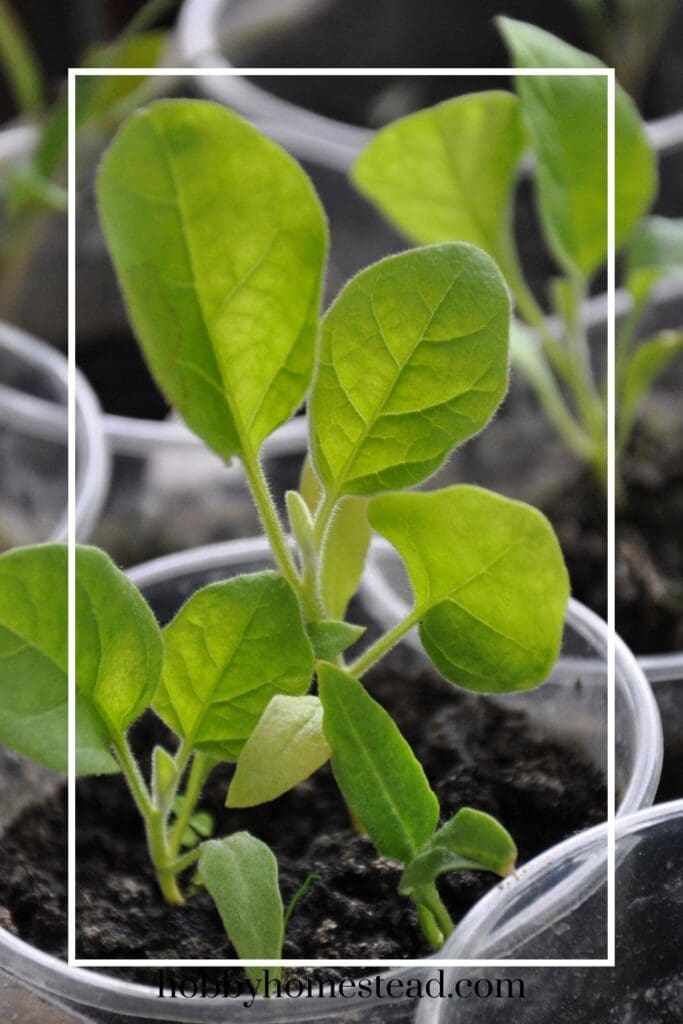
When Starting with Eggplant Seeds, When Do You Add Support?
When starting eggplant from seeds, you generally don’t need to add support right away because the seedlings are small and delicate.
Support is only necessary once the plants are transplanted and start to grow taller, especially when they begin flowering and setting fruit, which can make the stems heavy.
Here’s a detailed timeline:
- Seed Stage (0–4 weeks)
- Sow seeds in seed trays, peat pots, or small containers.
- Keep in a warm, sunny spot or under grow lights or full sun.
- No support is needed yet.
- Eggplant Seedlings Stage (2–6 inches tall)
- Continue growing indoors until the last frost date. You need at least 6-8 hours of direct sunlight.
- If seedlings get leggy, you can use a small stick or pencil for minor support, but it’s usually not required.
- Transplanting Stage
- Once seedlings are 4–6 inches tall and have a couple sets of true leaves, transplant them into larger pots or your garden.
- At this stage, it’s the best time to start adding support. You can add a small stake or tomato cage to help them grow upright.
- Fruit-Bearing Stage
- When flowers appear and fruits start developing, the plants get heavier.
- This is the critical time to provide full support with stakes, cages, or a trellis. All are great ways to support the plants.
Tip: Eggplants can become top-heavy bearing large fruit. Especially taller varieties. Using cages or tying them gently to stakes early on helps prevent breaking later.
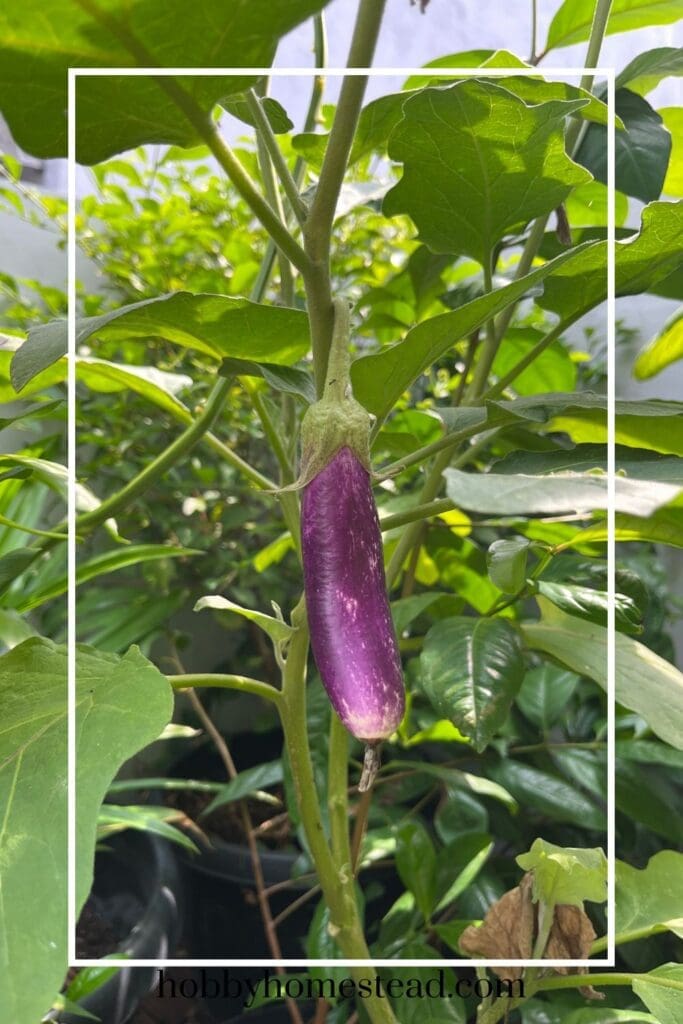
Conclusion
While eggplants don’t always require a trellis, providing support is generally a smart idea. Especially for large-fruited varieties, container plants, or gardens in windy areas.
You don’t need anything fancy from garden centers to provide support. A simple stake, cage, or trellis can protect your plants, improve yields, and make harvest easier.
By supporting your eggplants, you ensure your garden remains healthy, productive, and easy to manage.


